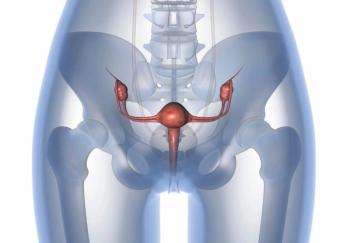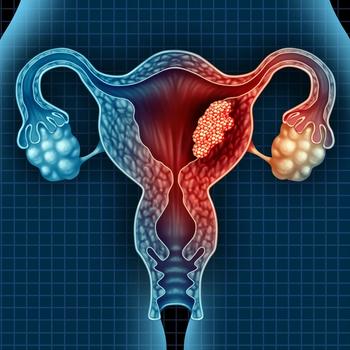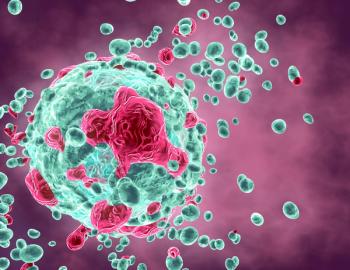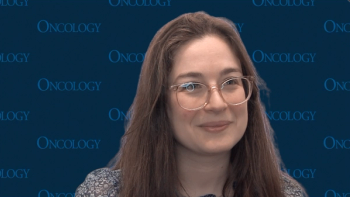
- ONCOLOGY Vol 14 No 1
- Volume 14
- Issue 1
Endometrial Carcinoma and Precursors: Diagnosis and Treatment
This clinically oriented text focuses on the diagnosis and management of endometrial adenocarcinoma and endometrial hyperplasia. Due to its clinical orientation, the book does not include information on the molecular basis of endometrial cancer.
This clinically oriented text focuses on the diagnosis and management of endometrial adenocarcinoma and endometrial hyperplasia. Due to its clinical orientation, the book does not include information on the molecular basis of endometrial cancer.
At 288 pages, the book is relatively short but is strengthened by the liberal inclusion of tables, figures, histopathology photomicrographs, and other useful photographs. Although the book is generally well written in a fairly uniform fashion, there are areas of unnecessary repetition.
The first chapter centers on the epidemiology of endometrial carcinoma. Although concise, this chapter adds little new information to other published chapters on the topic. Few of the references were published later than 1994. Also, the chapter provides no discussion on inherited cancer syndromes that place a woman at higher risk of endometrial cancer.
The second chapter focuses on methods of early diagnosis and potential methods of screening women for endometrial cancer. It contains 42 excellent illustrations of endometrial pathology noted at hysteroscopy.
The third chapter reviews endocrine aspects of the uterus as they relate to endometrial cancer. It starts out with a nice overview of endometrial anatomy and physiology. There is very little discussion of the effects of tamoxifen (Nolvadex) on the uterus, however, and no mention of the effects of raloxifene (Evista). Another blatant omission is any discussion of the hormonal therapy of advanced endometrial adenocarcinoma. Also missing is advice on how to manage young women with grade 1 endometrial adenocarcinoma who wish to maintain fertility.
Chapters 4 and 5 deal with the pathology of endometrial hyperplasia and endometrial adenocarcinoma, respectively. The author presents a nice discussion of biological prognostic indicators. The chapter contains over 40 excellent photomicrographs but no gross histopathology photographs.
Chapter 6 describes treatment modalities for endometrial hyperplasia. The authors suggest the use of endometrial ablation as an alternative treatment for medically resistant forms of endometrial hyperplasia (without cytologic atypia), and devote a significant portion of the chapter to a discussion of various methods of performing ablation. This discussion seems out of place since most authorities agree that endometrial cancer and its precursors should not be treated with endometrial ablation.
Chapters 7 and 8, which cover staging and prognostic factors in endometrial carcinoma, respectively, could have been combined into one chapter. Overall, these discussions are thorough and very good.
Chapters 9 and 10 focus on the surgical management of endometrial cancer, with a nice discussion of the use of laparoscopy.
Chapter 11, which explores the role of radiation therapy in endometrial cancer, is an excellent overview on the subject. The authors include many photographs or figures of equipment and radiation techniques used in the treatment of patients with uterine cancer.
The final chapter is a well-written review of the role of chemotherapy in patients with advanced endometrial cancer. It includes data on the efficacy of both single-agent and combination drug therapies.
Overall, Endometrial Carcinoma and Precursors is a very good text that presents a focused, relatively concise discussion of endometrial carcinoma. It should be a useful aid to practitioners who manage women with endometrial cancer.
Articles in this issue
almost 26 years ago
Raltitrexed Combination Appears Promising in Advanced Colorectal Canceralmost 26 years ago
New Delivery System p53 Gene Holds Promise for Prostate Cancer Treatmentalmost 26 years ago
Interim Results of Trials of Chemotherapy Plus Electric Pulsesalmost 26 years ago
Experimental Compound Targets Molecular Cause of Leukemiaalmost 26 years ago
Changes in Medicare Fees for theYear 2000almost 26 years ago
Are ‘Platins’ on the Way Out in Regimens for NSCLC?almost 26 years ago
Margin Width the Key to Controlling DCIS of the Breastalmost 26 years ago
First Phase II Results of Cisplatin/Epinephrine in Primary Liver CancerNewsletter
Stay up to date on recent advances in the multidisciplinary approach to cancer.





